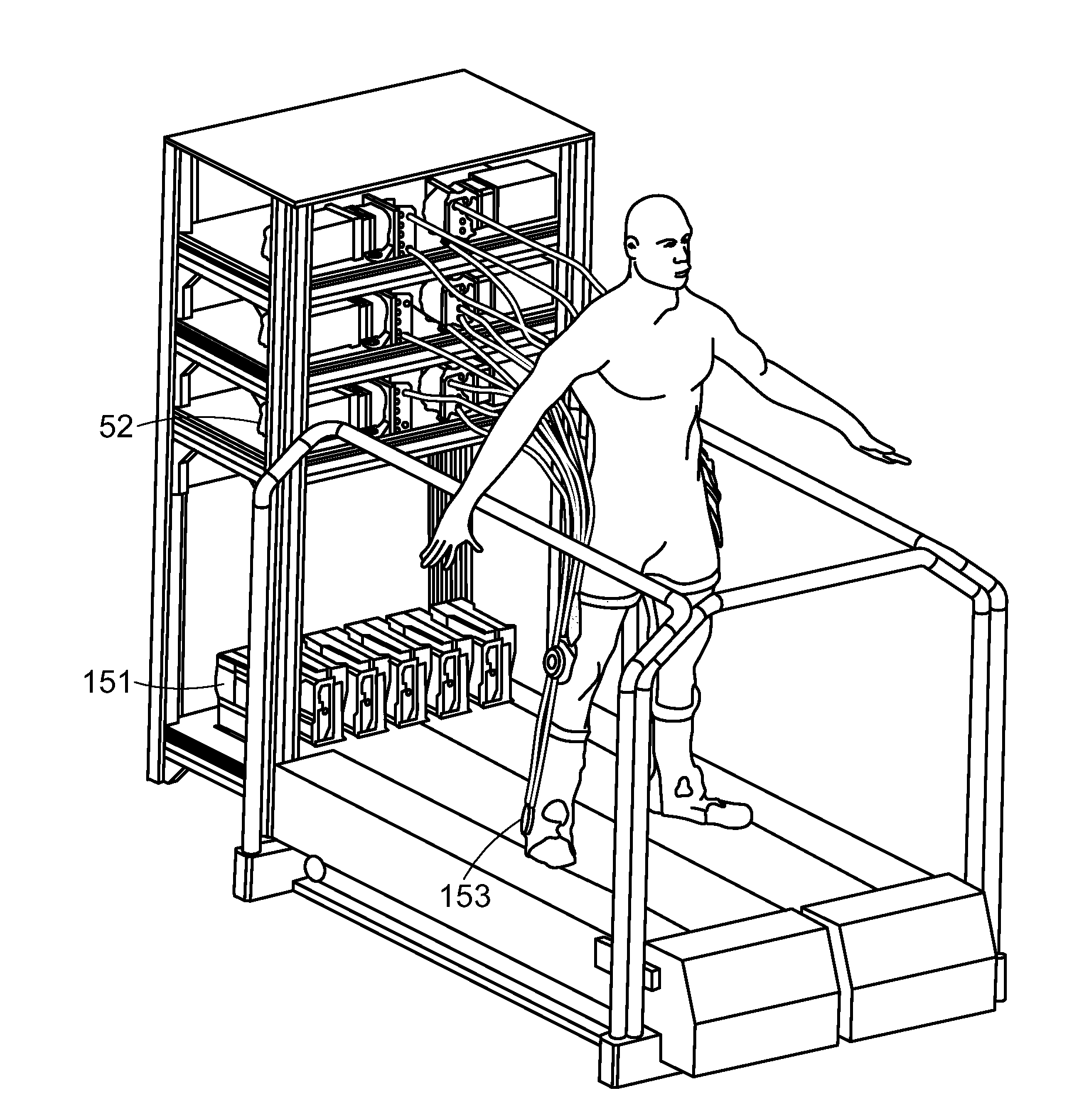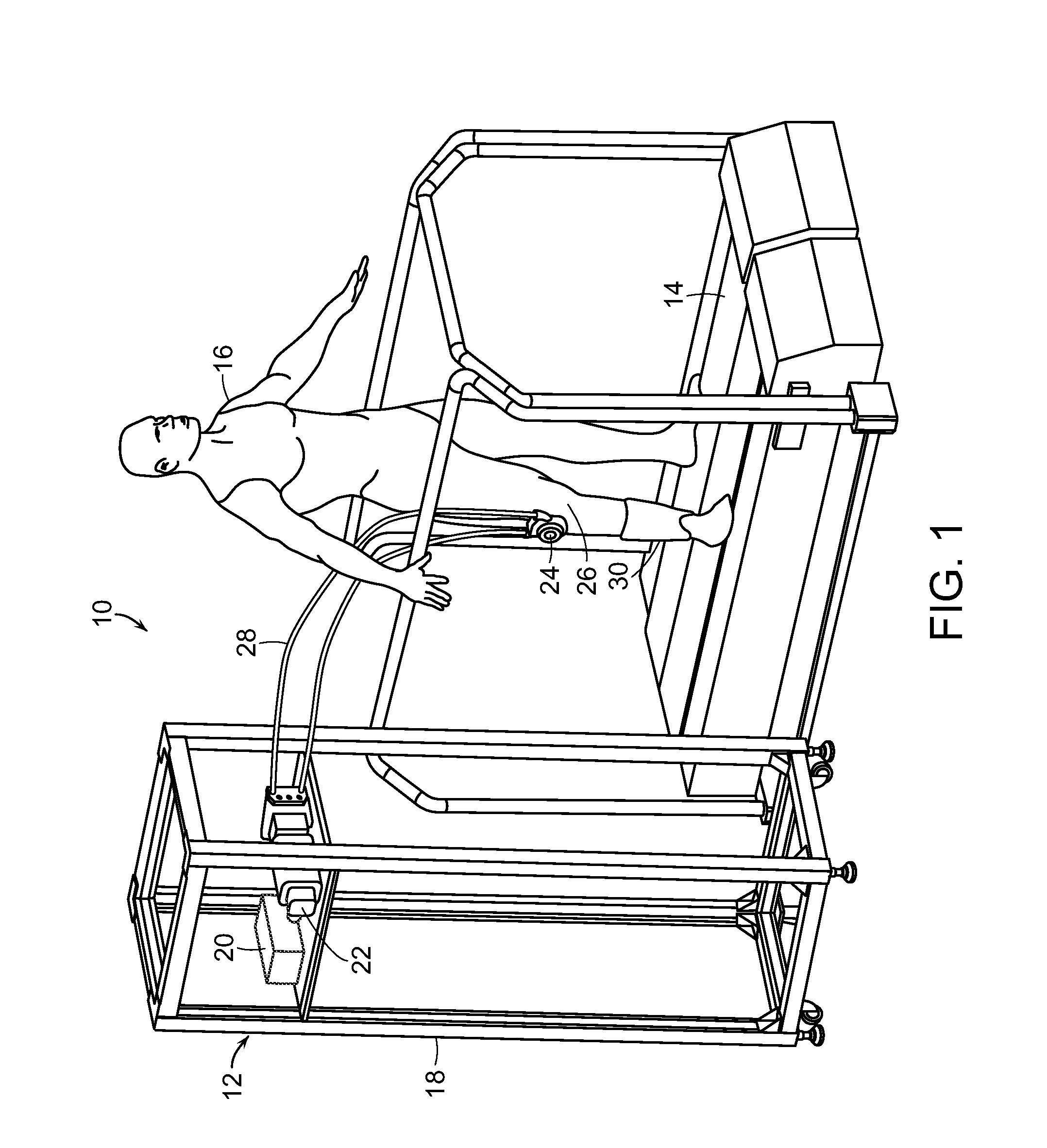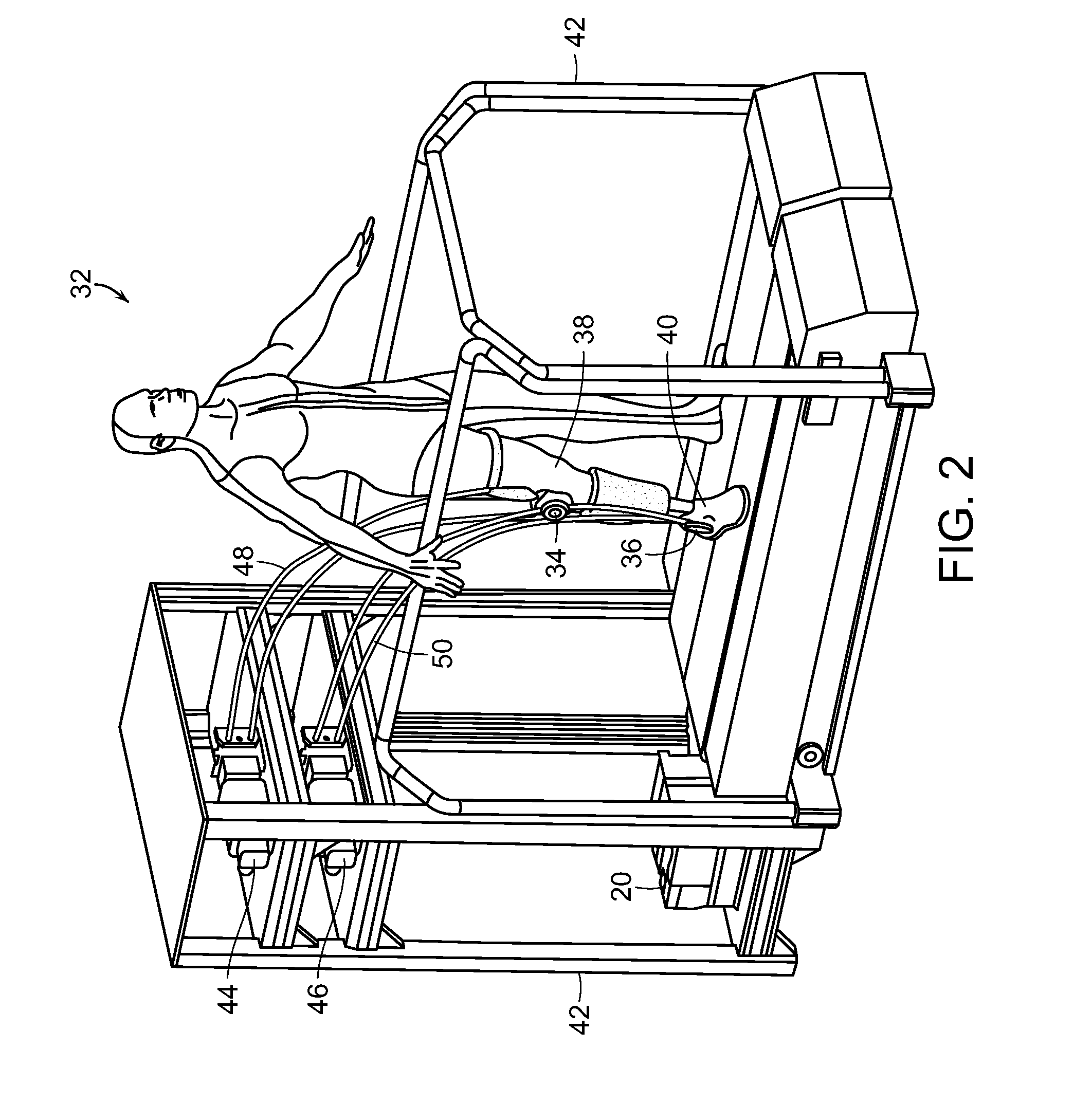Robotic System for Simulating a Wearable Device and Method of Use
a technology of wearable devices and robots, applied in the field of robots for simulating wearable devices and methods of use, can solve the problems of significant added inertia attached to the wearer's body, limited degree of freedom or output capacity of assistance, and used for rehabilitation or assisting human walking at low speed, so as to reduce the weight of parts, accurately and quickly model, and reduce the effect of weigh
- Summary
- Abstract
- Description
- Claims
- Application Information
AI Technical Summary
Benefits of technology
Problems solved by technology
Method used
Image
Examples
Embodiment Construction
[0037]The invention generally is directed to a robotic system for simulating a wearable device and to a method for simulating a wearable robotic device.
[0038]One embodiment of a robotic system for simulating a wearable device of the invention is shown in FIG. 1. As represented therein, robotic system 10 includes a suitable support, such as stand 12. Stand 12 includes treadmill 14. Optionally, force sensors or pressure sensors (not shown) detect footsteps of subject 16 on treadmill 14. Actuation source support 18 is adjacent to treadmill 14. Optionally, actuation source support 18 can be remote from treadmill 14. Control system 20 is mounted on actuation source support 18. Optionally, control system 20 can be mounted remotely from actuation source support 18.
[0039]Actuation source 22 is mounted on actuation source support 18. Actuation delivery mechanism 24 is fitted to subject 16 and is capable of delivering force to a prosthesis (not shown) or physiological joint 26 of subject 16, ...
PUM
 Login to View More
Login to View More Abstract
Description
Claims
Application Information
 Login to View More
Login to View More - R&D
- Intellectual Property
- Life Sciences
- Materials
- Tech Scout
- Unparalleled Data Quality
- Higher Quality Content
- 60% Fewer Hallucinations
Browse by: Latest US Patents, China's latest patents, Technical Efficacy Thesaurus, Application Domain, Technology Topic, Popular Technical Reports.
© 2025 PatSnap. All rights reserved.Legal|Privacy policy|Modern Slavery Act Transparency Statement|Sitemap|About US| Contact US: help@patsnap.com



